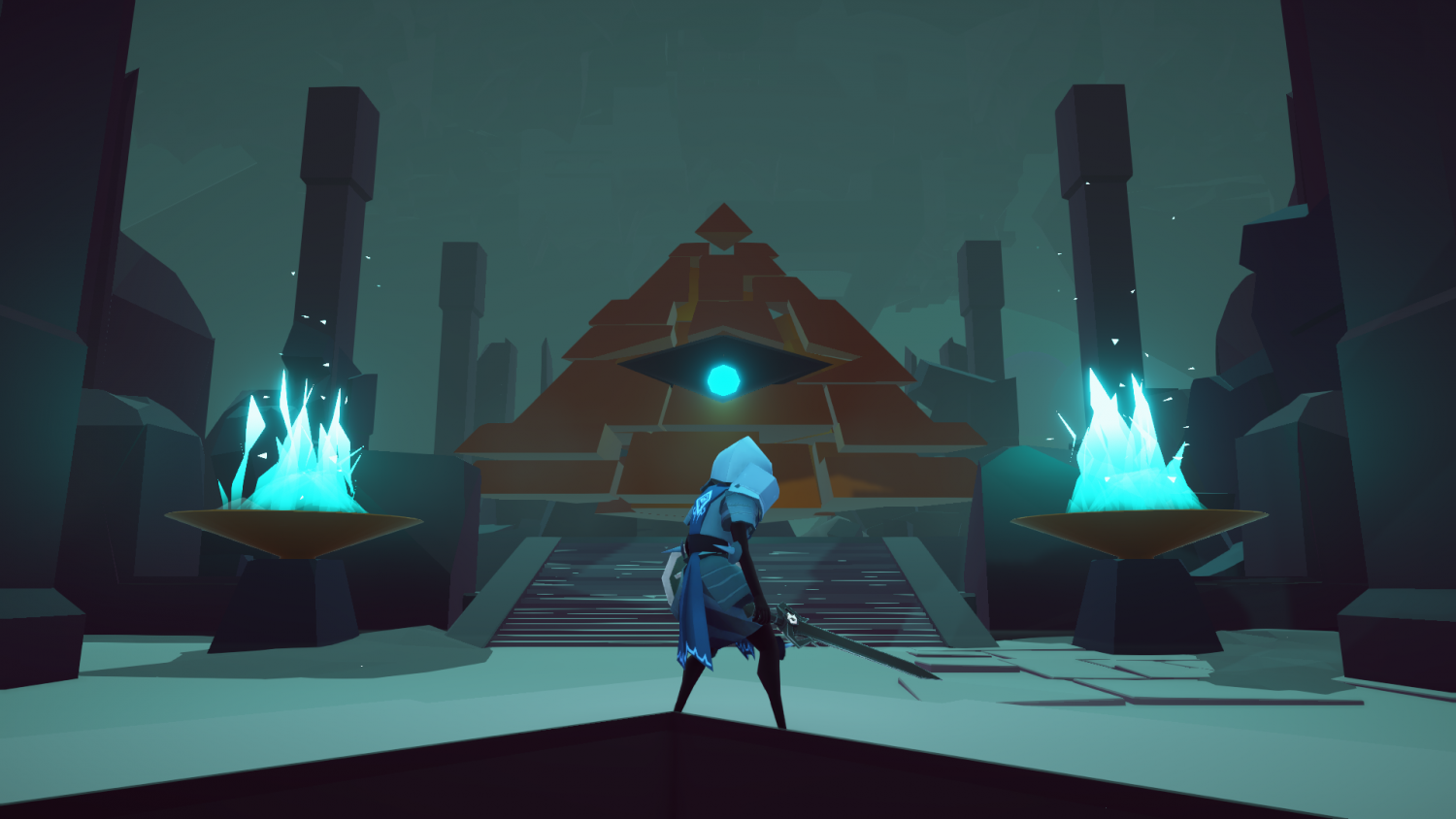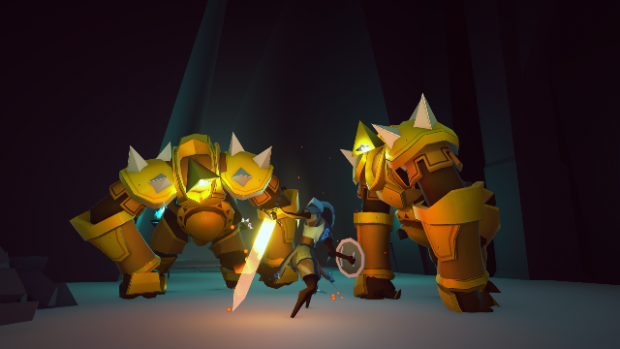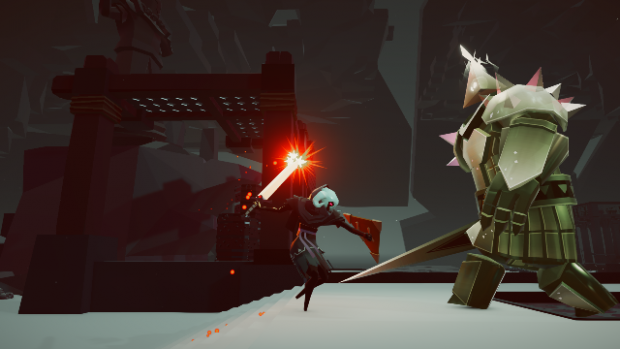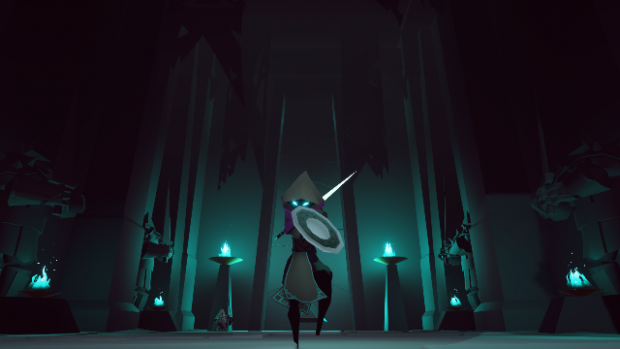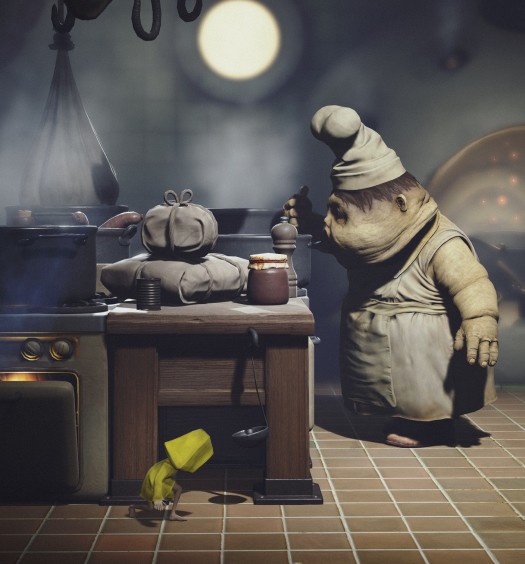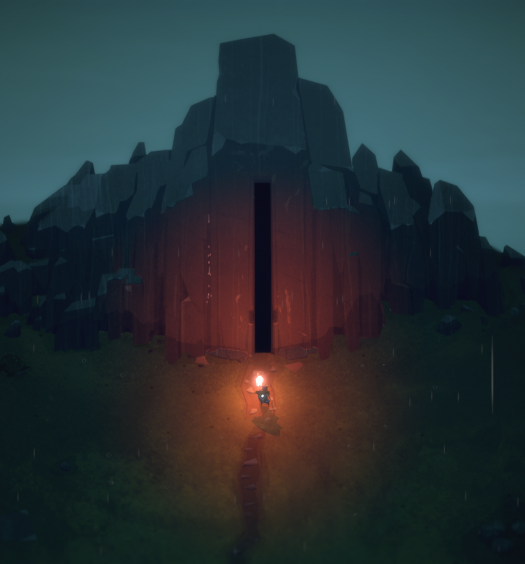Demon’s Souls, Dark Souls, Bloodborne — these are games I have intentionally avoided. Sure, they look enticing, and their Metacritic scores are in the high ’80s to low 90s, but “intentionally brutally difficult” isn’t so much a selling point for me as it is a warning sign indicating in no uncertain language I should avoid a game. In my teens and early 20s, I would have stubbornly ignored such warnings and picked up such a game anyway as long as it looked fun, but these days I find myself with considerably less patience for that sort of game.
And so it was that when Harebrained Schemes announced Necropolis in 2014 and pitched it as a Dark Souls-inspired roguelike I assumed this was not a game for me. As with the Dark Souls games that inspired it, Necropolis appears as a game you’d want to play. Here was another game with that certain je ne sais quoi. There is some sort of implicit promise made by its art direction and the way animators and designers have leveraged it that this is going to be a great game. But did I really want to play a game that was also essentially promising to frustrate me at every turn and inspire fits of controller-throwing rage? As it turns out, maybe I do.
Roguelikes were everywhere at PAX East this year, and Hairbrained Art Director Chris Rogers didn’t describe Necropolis as being radically different than any of the rest of them. It’s hard, the world is procedurally generated, the enemies are random and you have to proceed ever deeper into the titular necropolis in which you’re going to die frequently. Even the boss encounters sound like they’ll be random.
“It’s all procedurally generated,” Rogers said. “There are no boss areas. You just sort of find your way farther down.”
That appeared to be true enough as I watched Rogers play and eventually took my turn doing so. The game wastes no time in subtlety guiding the player to leap down holes and scurry down staircases to proceed toward my inevitable doom from some unseen horror. It doesn’t explicitly say you have to keep going deeper or necessarily encourage you to jump into combat with the various subterranean monsters that call the necropolis home, but it’s clear enough that that’s what you’re supposed to do. And while, in typical roguelike manner, you won’t have any sort of map or compass indicating the exact point or room you should be progressing toward next, you’ll at least have the ability to craft chalk to help you avoid retreading the same ground twice.
“It shows you where you’ve been,” explained Rogers. “You won’t know where you’re going, but at least you’ll know where you’ve been.”
Where I ended up going first was a series of dark rooms full of crystalline monsters known as Grine that were easy enough to dispatch. Even with the weak sword and shield you begin the journey with, it’s not particularly hard to combine blocks and dashes with quick and heavy strikes to overcome small groups of the beasts. They won’t always come in small groups, though. Because nothing draws a crowd like a crowd, engaging in battle with enemies has the potential to alert more enemies and lure them into the fight. Naturally, the more monsters jump into the fray, the more difficult it becomes to stay alive. Unless of course, you just happen to aggro the right enemies. Manage to pull that off, and they’ll do some of the work for you.
“Enemies all have factions, and some enemies will hate each other so much that they’ll help the player because when they see each other they’ll start attacking each other,” said Rogers. “I fought a lot of those crystal enemies at the beginning of my playthrough. Those guys have a natural predator, the gem eater, and so if they come into contact with each other they’ll fight each other. And as a player you can decide whether or not to sort of pick them off or run away. It gives you kind of an opportunity to duck away.”
Being the type who is inclined to run carefree into danger and start wildly swinging my sword until everything in sight is dead, this didn’t come naturally to me. However, I quickly noticed that Rogers was speaking the truth and that the enemy of my enemy was my friend — temporarily. As soon as one monster faction emerges victorious over the other, it turns its attention back to the player. This means you have to quickly weigh your options in each encounter and decide if you’re going to support one faction or the other or neither. Are you better off helping the Grine wipe out their predators (the Gemeaters) first? Does it make more sense to help the Gemeaters wipe out the Grine first? Or are you so low on health and resources that laying low and letting matters sort themselves out is your best bet?
No matter which approach you take, you’ll want to do so with caution. Your health bar can withstand more than a few hits from these earlier creatures, so you end up feeling pretty strong when encountering only a couple of them. Death becomes inevitable for the careless adventurer when Necropolis starts throwing handfuls of multiple enemy types into the room with you at the same time, however. And while Rogers implied I survived longer than most in the demo, I eventually ran into trouble when the number of aggressors swelled from a few that I was brazenly hacking and slashing to overwhelming numbers.
Something similar happened to Rogers when he played, and while he did manage to escape the battle and use a potion, it only made his situation worse. That’s because it was a confusion potion that cut his character’s speed in half. “If it was the last thing I had, and I needed a heal I could have done something like this, and it would have ended my game if I had drank it during combat,” he said.
Intuitive use of potions or not, both of our play sessions do eventually end with death, of course. What else would you expect from a roguelike that sends you into a spooky underground cemetery? What’s surprising, is how much resolve to head right back underground I maintained after death. Maybe I’ll give Necropolis a shot when it releases on Xbox One this summer. Maybe I should give FromSoftware’s RPGs a second look, too. Maybe that’s exactly what Bandai Namco is hoping for by publishing Necropolis, but that might not be so bad — even if it is so hard.

